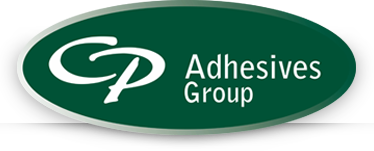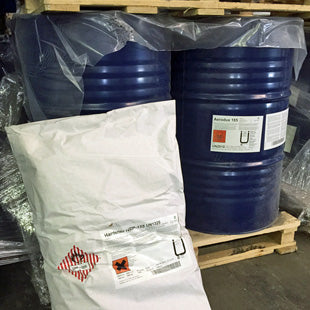15 Frequently Asked Questions About Contact Cement
1) What is a contact cement?
Contact cement is an adhesive, which, when coated on two mating surfaces and allowed to dry, provides an instant permanent bond when brought into firm contact. While contact bond adhesives are widely used for bonding decorative laminates to substrates, they are almost a “universal” general purpose cement, and will bond a variety of substrates to one another such as wood, leather, metal, etc.
2) How is contact cement applied?
By brush, roller coater, notched trowel, air spray (hot or cold), airless spray (hot or cold), curtain coater.
3) How much cement should be applied?
Enough to coat the surface uniformly and thick enough that, when completely solvent-free, a tacky, somewhat resilient film is left.
4) What type of roller should be used to apply pressure to the finished part after adhesive is applied?
A standard “J” roller or a pinch roller.
5) How soon should bonding be done?
This may be done as soon as solvent is completely gone. If you can press a finger to the surface and pull away cleanly and with no sign of “legginess” the surface is dry. If there is any doubt at all, give it a few extra minutes. If any puddling has occurred, be sure the puddles are dry. After dryness has been reached, you have an hour to make the bond. This is called “open time”.
6) How is drying accomplished?
Drying is accomplished by ordinary air exposure, use of fans, passage under infra-red bulbs, or passage through a heated tunnel. It all depends on the production speed desired.
7) Does temperature affect the drying time of contact adhesives?
Drying takes place more slowly at lower temperatures and is faster at higher temperatures.
8) Does humidity affect the drying time of contact adhesives?
When humidity is low, drying is accelerated. When it is high, drying is slower.
9) What does viscosity mean?
Viscosity is a measure of the thickness of the adhesive: the higher the viscosity, the thicker the adhesive. Spray adhesives have low viscosity to allow proper atomization by the spray gun. Brush adhesives have a higher viscosity to provide easy spreading and prevent soaking-in porous core materials.
10) What is the solids percentage of a contact adhesive?
The solid portion of the adhesive is the bonding agent. The solvent is only a carrier to provide an easy method of application. Therefore, adhesives with a higher solids percentage generally contain more usable adhesive per gallon.
11) What is “blush”?
“Blush” is moisture condensing on freshly applied adhesive due to the rapid solvent evaporation cooling the air below the dew point.
12) Can any precautions be taken to prevent “blush”?
Two courses of action are possible:
- Install a drying heat tunnel and use it for all panels immediately after the adhesive is applied. This will also decrease the drying time and increase productivity.
- Apply the adhesive by the hot spray method. Using this method, the adhesive is applied at about 135 degrees F and the cooling effect of solvent evaporation is not sufficient to cause “blush.”
13) Is there a common solvent that can be used to thin contact adhesives?
Various solvents used in contact adhesives are usually special blends designed to give certain applications properties. To avoid potential problems of changing the drying time and spray ability or brush ability, use only the manufacturer’s recommended thinner.
14) Do contact cements come under air pollution regulations like Rule 66 in L.A?
Yes, as a result of EPA, state VOC (Volatile Organic Compounds) regulations and Chlorinated solvent regulations, the effect on contact bond adhesives will be many and varied. Since the trend is definitely towards more regulations and stricter enforcement, it is advisable to contact your distributor if any questions arise.
15) What are the prime causes of bond failure?
- Coating too thin (not enough glue)
- Bonding too soon
- Not enough pressure
- Exposure to high heat within 3 days
- Choosing a selection results in a full page refresh.
- Press the space key then arrow keys to make a selection.













